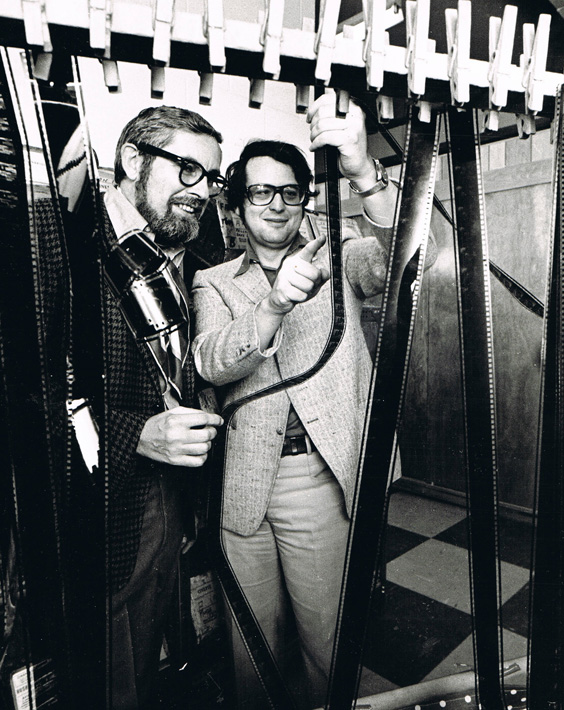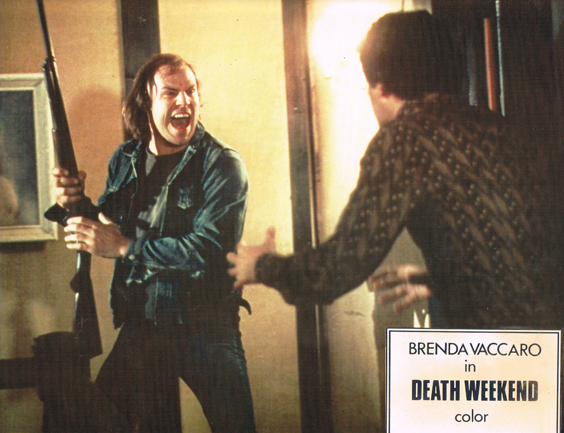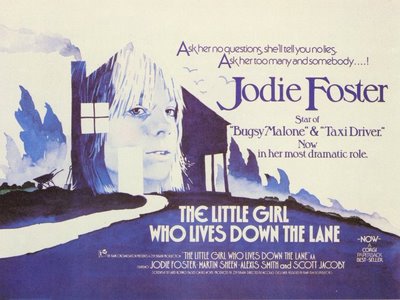From Cinépix to Cineplex: The Studios that Dripped Maple Syrup
From Cinépix to Cineplex: The Studios that Dripped Maple Syrup
By Paul Corupe
(please note this article has been re-posted from our July issue, in honour of John Dunning, who passed away earlier this week, on September 19th)
———————-
Now, the prospect of delving into the nuts and bolts of the corporate world viagra professional scam of Canadian filmmaking might seem only slightly less convoluted than, say, discussing tax shelter reform. But often forgotten in favour of more visible figures like directors and actors, it is the production and distribution companies like Cinépix, Quadrant Films, Astral, and Cineplex that invisibly created and maintained the tradition of online pharmacies uk selling levitra Canadian b-film for over four decades. And it’s high time we looked behind the stylized logos briefly flashed across movie screens and paid tribute to the suits behind the horror and science fiction films that terrorized and entertained Canadians.
Lured by the twinkling offer of Canadian Film Development Corporation (CFDC) funding in the 70s, many Canadian distribution companies gradually expanded their operations to include the production of feature films. Perhaps Cinépix (now Lionsgate) is the most infamous of these names, and not only because David Cronenberg once cialis levitra viagra compare compared Cinépix head honchos André Link and John Dunning to b-movie mogul Roger Corman. Unfortunately, discussing the business of making b-films in Canada isn’t quite as clear-cut as Cronenberg’s comment suggests there is no Canadian “version” of AIP, no Canadian Hammer, and no Canadian Crown-International. Rather than trying to carve out a particular niche, many companies threw anything and everything at their audiences in pursuit of tax shelters and funding b-films in almost every genre, documentaries of varying educational value, and even “legitimate” dramas.
It’s impossible to go into detail about every company that has had a hand in shaping Canadian b-films, since many only existed for only one film, others not even that long. These companies were the more visible and influential players, but for each company canadian pharmacy viagra generic discussed below, others like Faroun Films, Meridian, Ambassador Film Distributors, Filmplan International, and August Films still remain in the shadows.
Sleazing it up with Link and Dunning’s Cinépix
In 1961, Nat Taylor helped produce the Canadian b-classic The Mask, which was picked up for North American distribution order cheapest propecia online by Warner Brothers. Only one year later, a distribution company called Cinépix appeared. Co-founded by John Dunning and André Link, Cinépix began bringing Canadians cheap independent productions like Mermaids of Tiburon (1962), The Pink Pussy Cat (1963), and early Russ Meyer films. The emphasis was definitely on titillating European and American sex flicks, but Cinépix also imported Carnival of Souls (1962), Masterworks of Terror (1965) and a smattering of other spooky titles. As the biggest schlock importers in the country, Cinépix had the distinction of distributing all kinds of oddities, including Barry Mahon’s insanity-inducing children’s films like Santa and the Ice Cream Bunny (1972).
 Although Cinépix would never completely rely on government assistance throughout their existence, it wasn’t exactly a coincidence that their production division started the year after that the CFDC was established. Their first film, the government funded Valérie (1969), was a sexy comedy in the same tradition as the foreign films they had been distributing. Valérie appeared just as Quebec morality was loosening its belt, and became a smash hit which earned over $1 million at the box office. After Claude Fournier’s similar Deux Femmes en Or (1970) and their own L’Initiation (1970) did even better, Cinépix suddenly had a soft-core Francophone phenomenon on their hands. They launched into high gear, turning out several low-budget films that became a entire mini-genre of Canadian film known as “maple syrup porn.”
Although Cinépix would never completely rely on government assistance throughout their existence, it wasn’t exactly a coincidence that their production division started the year after that the CFDC was established. Their first film, the government funded Valérie (1969), was a sexy comedy in the same tradition as the foreign films they had been distributing. Valérie appeared just as Quebec morality was loosening its belt, and became a smash hit which earned over $1 million at the box office. After Claude Fournier’s similar Deux Femmes en Or (1970) and their own L’Initiation (1970) did even better, Cinépix suddenly had a soft-core Francophone phenomenon on their hands. They launched into high gear, turning out several low-budget films that became a entire mini-genre of Canadian film known as “maple syrup porn.”
Some believe that it was Cronenberg who changed the face of Cinépix from a soft-core film company to a house of horrors, but this is a misconception. Thanks to their continued importation of grindhouse films, Link and Dunning were always on top of sleazy cinematic trends, and Cinépix had dabbled in making horror films like The Possession of Virginia (1972) and The Pyx (1973) before Shivers (1975) was ever on the drawing board. Originally Cronenberg was brought on to work the sex films, even directing a screen test for one of the few Anglophone maple porns, Loving and Laughing (1971). But eventually, he convinced Link and Dunning to let him make his first horror feature.
Before it went on to make a killing at the box office, Shivers was vilified by the critics. After Robert Fulford’s famous scathing review of Shivers in Saturday Night magazine, Link went on the offensive. He wrote editorials in Cinema Canada (who oddly enough took up the cause with him after blasting previous Canadian horror films like Black Christmas (1974) as being “anti-female.”) He even published a pamphlet entitled “Is There a Place for Horror Films in Canada’s Film Industry?” Clearly he thought so, and Cinépix spent the next few years proving it.
Eventually, Cinépix began weeding out the sexploitation films in favour of thrillers and horror. Also helping to diversify Cinépix’s genre efforts were two new staff members: Don Carmody was hired as Executive in Charge of Production in 1973, and a year later, Cannibal Girls (1973) director Ivan Reitman was brought into the fold as well. Reitman and Carmody combined forces with Link and Dunning to bring forth highly controversial tax shelter productions like Death Weekend (1976), East End Hustle (1976), Ilsa, Tigress of Siberia (1977) and Blackout (1978). It may be impossible to pin a distinct style on any Canadian production company, but if you find yourself watching a sleazy 1970s Canuxploitation film, chances are it was produced by Reitman or Carmody for Cinépix.
But the jewel in Cinépix’s crown was a film that Reitman directed himself Meatballs (1978). Originally conceived as a drama, Cinépix’s Meatballs was picked up for distribution by Paramount and grossed $46 million in North America. It was the first huge hit for Canadian film, but ironically, it was also one of the last Cinépix films that qualified for CFDC assistance due to new, stricter cultural criteria.
Perlmutter and James Find the Cult Film Quadrant
While Cinépix may have had the lock on Francophone b-movies in the late 60s and early 70s, the market was wide open for an Anglophone counterpart. Stepping into that role was Peter James, a British writer who emigrated in 1970 to work on the venerable Canadian kids show Polka Dot Door. The next year, James and his business partner David Perlmutter decided to take advantage of CFDC funding and established Toronto-based Quadrant Films to produce theatrical releases for North American audiences.
Right off the bat, Quadrant invested in The Corpse Grinders (1972) and Blood Orgy of the She Devils, (1972) two Florida exploitation films made by the not-so-venerable Ted V Mikels, an established cult director in his own right. When Mikels took a job as cameraman on a new horror film by a first time director later that year, Quadrant was there again. To everyone’s surprise, the resulting film Bob Clark’s Children Shouldn’t Play With Dead Things (1972)turned out to be a box office hit on the drive-in circuit. James and Perlmutter also funded Clark’s second Florida-shot film, Deathdream (1972), and persuaded him to come to Toronto to complete the film’s post-production. Although this was the last of Clark’s films that Quadrant actually produced, Clark ended up staying stayed in Canada for over 10 years, and went on to make an indelible impact on our film landscape. Although Quadrant went on to produce only nine movies after their initial success investing in Florida productions, they quickly became English-speaking Canada’s largest film company. Some of Quadrant’s more notorious productions were Vengeance is Mine (1974), as well as Paul Lynch’s first few films including Blood and Guts (1978) and Prom Night (1980). Quadrant also continued to invest in a variety of others pictures as well, funding such Canadian classics as Deranged (1974) and, with Cinépix, Death Weekend (1976).
The company stopped producing films in 1979 when James sold off his share of Quadrant to concentrate on a writing career back in Britain. Recently, James stepped back into a producing role, founding two new production companies, Ministry of Vision, and Movision, for the development of TV and films, respectively. Perlmutter also continued on in the business, helping to start up First Choice, Canada’s first pay-TV network on which many Canxuploitation films appeared. Mainly interested in taking advantage of co-production treaties, Perlmutter went back to the business of producing films in the 1990s. His latest films include a variety of Eastern European co-productions with American b-film outfit Full Moon.
Greenberg’s Astral Projections
Bob Clark bounced around to most of the production companies in Canada during his 10 years here, but none of his projects were more fruitful than the film he made for Astral—Porky’s (1982).
Like Cinépix, Astral was a Montreal-based company that was founded in the early 1960s, but that is where the similarities end. Originally a department store photographic concession owned by the Greenberg brothers, Astral eventually grew into a large chain of photo shops. Astral only got involved with filmmaking in 1973 after acquiring the Path-Humphries motion picture lab. His first production credit was for The Neptune Factor (1973), Daniel Petrie’s star-heavy disaster film Quadrant also had their hand in. Then, under the new name Astral Bellevue Pathé Limited, he started producing a handful of horror films like Seizure (1974), The Little Girl Who Lived Down the Lane (1976) and Rituals (1979).
If Cinépix owned the 60s and shared success in the 70s with Quadrant, Astral simply took over in the early 80s. After Meatballs, Don Carmody was hired on as a production executive at Astral, and the results provided enough fodder for years of articles arguing against tax shelters. City on Fire (1979), Crunch (1980), Death Ship (1980), Terror Train (1981) and Porky’s (1982) are just some of the titles Carmody and Astral churned out before the tax shelters collapsed. And when they did, it was all over—as of 1983, Astral withdrew from the production business, and Carmody left to start his own company.
But there was a new role to play. Home video was becoming an important aspect of the business, and Astral soon got involved with videocassette duplication and video wholesaling. In addition to their own titles, Astral released VHS versions of great Canadian b-movies like The Shape of Things to Come (1979), Humongous (1982) and Firebird 2015 AD (1981), as well as a rash of Cinépix titles including The Possession of Virginia (1972) and early Cronenberg pics.
The House of Dale: Robert Lantos and RSL
Alliance Communications founder Robert Lantos’ first production company wasn’t as prolific as more notable Canadian schlock outfits, but RSL Entertainment produced a weird variety of Canadian films in the 1970s and 80s. Several of them starred Lantos’ future ex-wife Jennifer Dale.
In 1972, Lantos started Vivafilm, a distribution company with his partner Victor Loew, and three years later he started producing films under the RSL Entertainment banner. Following Cinépix’s lead, RSL started out with sexy Quebecois fare—Gille Carle’s L’Ange et la Femme (1976). But things really got rolling in the 80s when Lantos cast Jennifer Dale as the lead in Suzanne (1980), and the next year in Your Ticket Is No Longer Valid (1981). It was a method of courting only available to the rich and powerful, but it worked… at least for a while.
After they married, Jennifer appeared as a guest on Lantos’ TV show, Night Heat, and her sister Cynthia Dale also found herself playing the lead in an RSL film—the hilariously cheesy Heavenly Bodies (1984). Finally, Jennifer starred in Separate Vacations (1986), one of the final RSL films about a couple drifting apart that probably mirrored Lantos and Dale’s real life troubles.
Over it’s 10-year history, RSL did squeeze out a few “prestige” pictures (which often resembled Drabinsky’s clunky Cineplex-Odeon productions), but what makes the company notable are the outrageous b-films they made during the tax shelter years. Aside from the aforementioned Heavenly Bodies, RSL produced a whack of quasi-erotic cinema like Bill Fruet’s Bedroom Eyes (1984) and George Mikhalia’s Scandale (1982), even teaming up with Playboy magazine at one point. The company also wasn’t adverse to throwing money at grade-z sci-fi schlock like the PBS co-production Overdrawn at the Memory Bank (1985).
In 1985, Lantos founded Alliance Communications Corporation which absorbed Vivafilm and RSL Entertainment. After Alliance merged with Atlantis in 1998, Lantos left the corporation to start a new production house, Serendipity Point Films. Now, Lantos has recast himself as one of the hottest Canadian producers, bringing the public such highly visible films as Stardom and Men with Brooms. After nearly 20 years of emulating the Cinépix production model, is Lantos finally trying to bury Heavenly Bodies in his celluloid closet?
Put the Kid In: Drabinsky’s Cineplex
The importance of home video hadn’t been lost on Nat Taylor, either. After helping to kickstart Canadian b-film in the fifties with films like the aforementioned The Mask, Taylor returned to the world of Canadian film with his new prot牡g, Garth Drabisnky.
It wasn’t until 1977, the tail end of the tax shelter years, that the two bought Cineplex from the Rank Organization, a British company, bringing Cineplex back under Canadian control for the first time in over 30 years. Drabinsky was installed as the CEO of Cineplex Corporation and aggressively started expanding the theatre chain throughout Canada, including the now outmoded l8-screen multiplex in Toronto’s Eaton’s Centre.
But the production bug was still in the air, and Drabisnky caught it. Cineplex’s first film project was a British co-production, a thriller called Disappearance (1977), starring Donald Sutherland and Christopher Plummer. It disappeared itself without much fuss, but it set the tone for the kind of quasi-Canadian movies that Cineplex would produce for the next decade with the help of the CFDC. It seemed like all Cineplex films were well-budgeted mild thrillers that starred aged white actors. Films like Tribute (1980), and The Amateur (1981) were fairly well received critically, but audiences found them a bit clunky. Cineplex’s saving grace was undoubtedly the The Changeling (1980), with an aged George C. Scott. This time, Drabinsky’s curious formula clicked with an audience and the picture was rewarded with big box office and Genies.
Perhaps more important than Cineplex was Taylor and Drabinsky’s new distribution company Pan-Canadian Film Distributors Inc., which was founded in 1979. Pan-Canadian handled all of the Cineplex movies plus more offbeat Canadian titles like The Rubber Gun (1977), Trapped (1981), American Nightmare (1981) and Music of the Spheres (1984), as well as director Anthony Kramreither’s naughty 80s films until Cineplex was sold to MCA in 1987.
Prophecy and Profits the Cloud Ten Way
One of the more recent studios to make the scene has been Cloud Ten Pictures, a Niagara Falls-based Christian company helmed by Canadian brothers Peter and Paul Lalonde. Their major success thus far has been Left Behind, a fundamentalist Christian film starring ex-sitcom star Kirk Cameron and his wife Chelsea Noble. Released on video in 2000 to a resounding silence from Canadian critics, Left Behind is easily one of the biggest homegrown breakaway hits of the last decade. Based on a best-selling series of Christian novels, Left Behind is about a television reporter who witnesses the rapture while on an airplane, in which the righteous believers ascend to heaven, while the others are forced to live under the Anti-Christ’s iron thumb. Shot in only 20 days, Left Behind was made with a budget of $17.4 million, more than double than what most Canadian films are budgeted at.
The Lalondes got their start with a quadrology of loosely related films about the rapture, each increasingly better budgeted, with bigger B-stars. Apocalypse (1998) is the post-rapture story about two reporters from the “World News Network” who try to save the earth from a rising political figure they think is the Anti-Christ. Made for a fraction of Left Behind and rife with stock footage, Apocalypse was first offered as a premium for viewers willing to contribute to preacher Jack Van Impe’s TV show This Week in Bible Prophecy. When the brothers found they had a surprise hit on their hands, they quickly followed up their success with Revelation (1999), in which the Anti-Christ (played by Canadian Nick Mancuso) has formed the World Government of One Nation Earth only to be opposed by an underground Christian movement led by Helen Hannah (Leigh Lewis). The third film, Tribulation (2000), has Hannah helping her police detective brother, played by Gary Busey, question his lack of faith. All the loose strings are tied up in Judgement (2001), starring Corbin Bernsen and Mr T(!), in which Helen Hannah is put on trial by the ruler to be executed for hatred of the human race. During the trial, she has to convince her own lawyer of the existence of God.
Cloud Ten’s films still have the look and feel of typical B-grade science fiction, but with one major difference: they have sold an astounding five million copies in over 30 countries and scored a distribution deal with Sony. The brother’s early success led to the licensing and filming of the first book of ten in the Left Behind series. While they continue to crank out Left Behind sequels, Cloud Ten has also gotten in the distribution game themselves, picking up considerably lighter American fare like the family dramas Waterproof and The Miracle of the Cards. Although their subject relegates them to a marginal status in both the Canadian film industry and Hollywood, their film budgets have bloomed from $300,000 to $17.4 million in a scant four years, and reaching mainstream audiences jmay only be a matter of bigger budgets, bigger stars and more popular stories.
Merger Time
While each of these companies made a distinctive mark, most have been dissolved, renamed, absorbed into other companies, bought out and bought out again. In 1997, Link and Dunning sold Cinépix Film Properties to Lionsgate Entertainment, who renamed the company Lions Gate Films. Taylor died in 1999, and three years later, Drabinsky was charged with allegedly defrauding investors in his new entertainment company, Livent. Quadrant and Astral simply abandoned film production. Today, it’s unfortunate, but not unusual, to watch the number of Canadian film companies reduced to a number you can reach on one hand. Although small, independent companies like Cloud Ten may try, there will almost certainly never be another genre film powerhouse Cinépix, Astral, Quadrant or Cineplex, large production houses dedicated to providing an alternative vision of Canadian cinema.
———————
This article first appeared on Paul Corupe’s essential website Canuxploitation.com HERE
Paul Corupe moderated the Tribute to Andre Link, John Dunning and Cinepix on Wednesday July 20th at 6:45pm at the Hall Theatre , featuring panellists George Mihalka, Larry Kent, Denis Heroux, Danielle Ouimet, Don Carmody and more. This free event preceded a screening of David Cronenberg’s shot-in-Montreal, Cinepix-produced debut feature, Shivers and is FREE ADMISSION!
More details on the event page HERE.

 September 22, 2011
September 22, 2011  1 Comment
1 Comment











